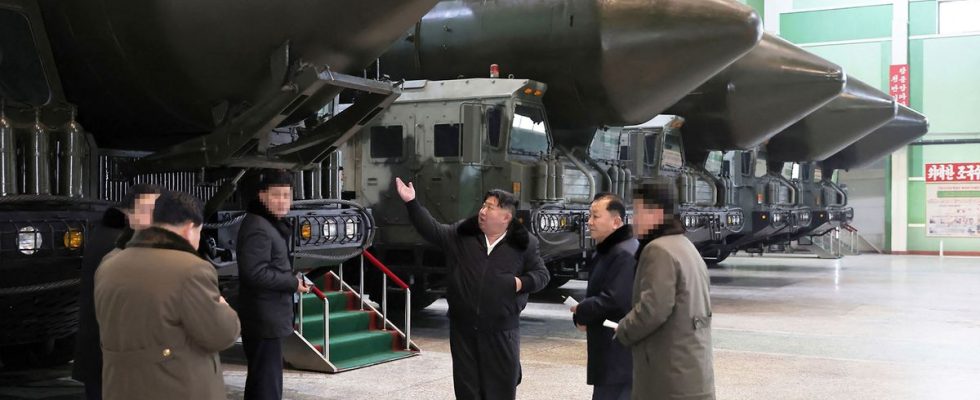The threat still looms from North Korea. Pyongyang is trying to increase pressure against an alliance between Washington, Seoul and Tokyo, which conducted joint naval exercises. In response, Pyongyang carried out “a major test of its “Haeil-5-23” submarine nuclear weapons system under development in the East Sea of Korea,” the North Korean Ministry of Defense announced on Friday. Defense in a statement cited by state agency KCNA on Friday, referring to an area also known as the Sea of Japan.
These trilateral exercises, involving a nuclear-powered American aircraft carrier, carried out by South Korea, the United States and Japan “constituted a cause of further destabilization of the regional situation”, Pyongyang castigated, describing them as “ serious threat to the security” of the North, added the ministry spokesperson, according to KCNA.
Deter the “main enemy”
The test announced Friday – the exact date of which was not specified – allows “the underwater counter-attack system based on the nuclear weapons of our army to be further strengthened”, highlighted the spokesperson , affirming that Pyongyang’s various maritime and submarine responses would “continue to deter hostile military maneuvers by the United States navies and its allies.”
Recent months have seen a sharp deterioration in long-strained relations between the two Koreas, with both sides abandoning key agreements aimed at reducing tensions, beefing up border security and conducting live-fire exercises along the border. North Korean leader Kim Jong Un recently described the South as the “main enemy” and threatened Seoul with war for any violation of “even 0.001 mm” of North Korean territory.
“Radioactive tsunami”
Friday’s announcement of the submarine test “is a clear sign of the deployment of Haeil drones in naval fleets for their use,” said Hong Min, an analyst at the Korea Institute for National Unification in Seoul. Last year, Pyongyang claimed to have conducted several tests of a so-called underwater nuclear attack drone – a different version of Haeil, which means tsunami in Korean, saying the weapon could trigger “a radioactive tsunami”.
“The North’s statement illustrates Pyongyang’s position that it will respond proportionately to the military exercises of the South, Japan and the United States,” he noted, adding that the North did not appear to be trying to “cross the line in order to provoke an armed conflict.
Ahn Chan-il, a defector-turned-researcher who heads the Global Institute for North Korea Studies, said it was “difficult to determine the exact capabilities” of Pyongyang’s so-called underwater nuclear weapons systems. “Given North Korea’s scientific level of defense and the fact that the weapon is still in the development stage, it is not yet capable of posing a significant threat,” he said. to the AFP.

